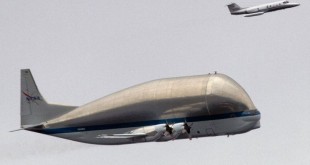In military terminology, a missile is a guided airborne ranged weapon capable of self-propelled flight usually by a jet engine or rocket motor. Missiles have five system components: targeting, guidance system, flight system, engine, and warhead. Missiles come in types adapted for different purposes: surface-to-surface and air-to-surface missiles (ballistic, cruise, …
Read More »Yearly Archives: 2022
Aircrafts and Rockets for global military logistics, space travel, asteroids and moon mining
Multiple countries are developing the ability to mine in space, specifically on the moon and on asteroids. The moon stands out as a nearby example of what will soon be the site of regular operations. The moon is home to hundreds of billions of dollars-worth of natural resources, including helium-3, …
Read More »Military tactical trucks seeing advanced capabilities and technologies
Military trucks are designed to carry personnel, equipment and supplies to support operations. Military trucks come in different sizes and with diverse capabilities. They range from adapted commercial trucks to purpose-built heavy tactical vehicles tailored for a wide range of applications. Operating military trucks in challenging and dangerous environments requires …
Read More »Close-In Weapons System (CIWS) provides last chance Defense for Naval ships
A close-in weapon system (CIWS), is a point-defense weapon for detecting and destroying short-range incoming missiles and enemy aircraft which have penetrated the outer defenses, typically mounted shipboard in a naval capacity. Nearly all classes of modern warship are equipped with some kind of CIWS device. CIWS Systems There …
Read More »China J-20 stealth fighter’s combat missions in the South China Sea, advancing China’s A2/AD strategy
China’s progress toward military superpower status continues to accelerate. According to the latest one, the People’s Liberation Army Air Force (PLAAF) now ranks as the third-largest air force in the world with 2,250 combat aircraft. The People’s Liberation Army Navy (PLAN) is the world’s largest, with 355 ships and submarines. …
Read More »Infrared Metamaterial Absorber
Metamaterials are artificial materials composed of periodic or aperiodic structures to have extraordinary electromagnetic characterizations. By properly tailoring the feature size of metamaterial, it can be realized electro-optic devices spanning the wavelength range from microwave, infrared (IR), visible to ultraviolet (UV) caused from the transformation optics. In view of …
Read More »Automotive embedded systems
Car technology is rapidly increasing. What was once science fiction, is quickly becoming science fact. Smartphone connectivity, high-powered entertainment systems, navigation, interactive systems feedback, driver responsive performance – the list of advancements goes on. The software used in cars is getting more complicated – and more connected. If vehicles are …
Read More »In-Fiber Photonic Processing for photonic computing
Artificial Intelligence promises huge benefits to the world but lacks the proper infrastructure for implementation. AI infrastructure today is either too expensive, too slow, too hot or far too power hungry to be sustainable and commercially available to many potential customers. This is especially salient for edge solutions where accurate, …
Read More »Cyberbiosecurity threats, vulnerabilites and cyberbiosecurity technologies
The life sciences now interface broadly with information technology (IT) through its industrial applications in health care, agriculture, manufacturing, automation, artificial intelligence, and synthetic biology. The information moves between living and cyber systems in a two-way flow. Global public health crises create conditions of extreme fragility where dual-use technologies …
Read More »Rocket and Missile system
The rocket and missile systems, are any of a variety of weapons systems that deliver explosive warheads to their targets by means of rocket propulsion. The rocket propulsion is a unique member of the family of jet-propulsion engines that includes turbojet, pulse-jet, and ramjet systems. The rocket engine is …
Read More » International Defense Security & Technology Your trusted Source for News, Research and Analysis
International Defense Security & Technology Your trusted Source for News, Research and Analysis




